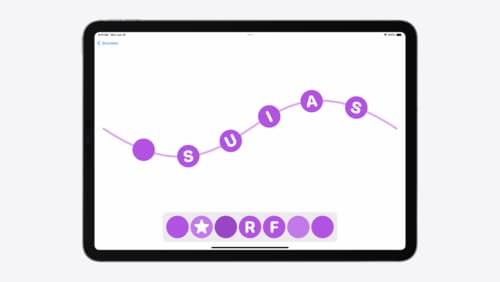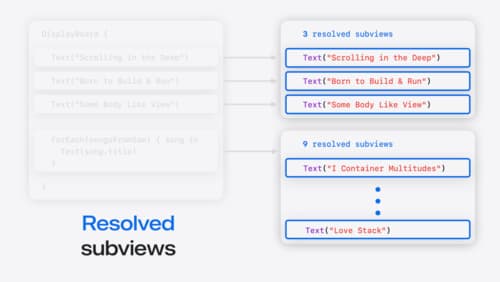tableviewcell
Asked on 2024-08-06
1 search
TableViewCell Updates in WWDC 2024
In the session titled What’s new in UIKit, several updates were introduced for UITableViewCell and related APIs:
-
Automatic Trait Tracking:
- Automatic trait tracking in iOS 18 simplifies the process of updating views when traits change. This feature is always active within supported update methods, ensuring maximum performance by only creating necessary trait dependencies. This is particularly useful for
UITableViewCellas it ensures that cells are updated appropriately when traits like horizontal size class change. - What’s new in UIKit
- Automatic trait tracking in iOS 18 simplifies the process of updating views when traits change. This feature is always active within supported update methods, ensuring maximum performance by only creating necessary trait dependencies. This is particularly useful for
-
List Environment Trait:
- All views in
UITableViewnow have the list environment trait set. This trait describes the style of the list that the view is in, ensuring that cells are styled appropriately. TheUIListContentConfigurationandUIBackgroundConfigurationnow take advantage of this new trait, automatically adjusting their properties to match the list environment from the configuration state's trait collection. - What’s new in UIKit
- All views in
-
Simplified Cell Configuration:
- The new list environment trait allows for simplified cell configuration. When configurations are applied to a cell, they are updated for the cell's configuration state. This means that the existing cell subtitle, cell, and value cell configurations now automatically update their appearance based on the list environment trait.
- What’s new in UIKit
-
New Constructors for Background Configuration:
- There are three new constructors for
UIBackgroundConfiguration: list cell, list header, and list footer. These configurations also update their appearance automatically from the list environment trait, further simplifying the code needed to style cells. - What’s new in UIKit
- There are three new constructors for
These updates make it easier to manage and style UITableViewCell in iOS 18, reducing the need for manual configuration and ensuring that cells automatically adapt to changes in the list environment.

Evolve your document launch experience
Make your document-based app stand out, and bring its unique identity into focus with the new document launch experience. Learn how to leverage the new API to customize the first screen people see when they launch your app. Utilize the new system-provided design, and amend it with custom actions, delightful decorative views, and impressive animations.

Enhance your UI animations and transitions
Explore how to adopt the zoom transition in navigation and presentations to increase the sense of continuity in your app, and learn how to animate UIKit views with SwiftUI animations to make it easier to build animations that feel continuous.

Demystify SwiftUI containers
Learn about the capabilities of SwiftUI container views and build a mental model for how subviews are managed by their containers. Leverage new APIs to build your own custom containers, create modifiers to customize container content, and give your containers that extra polish that helps your apps stand out.
